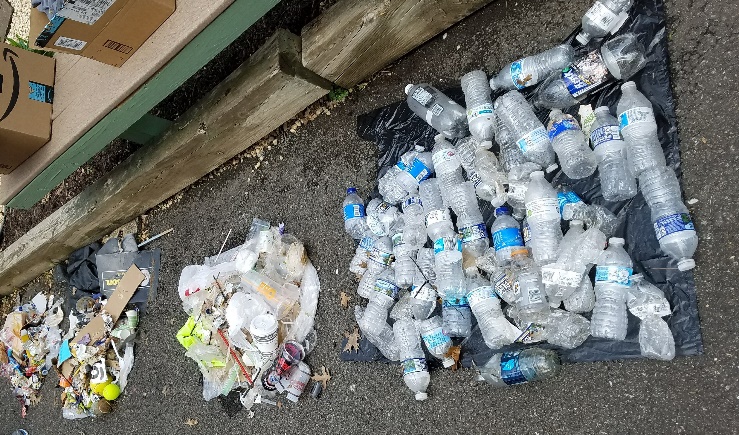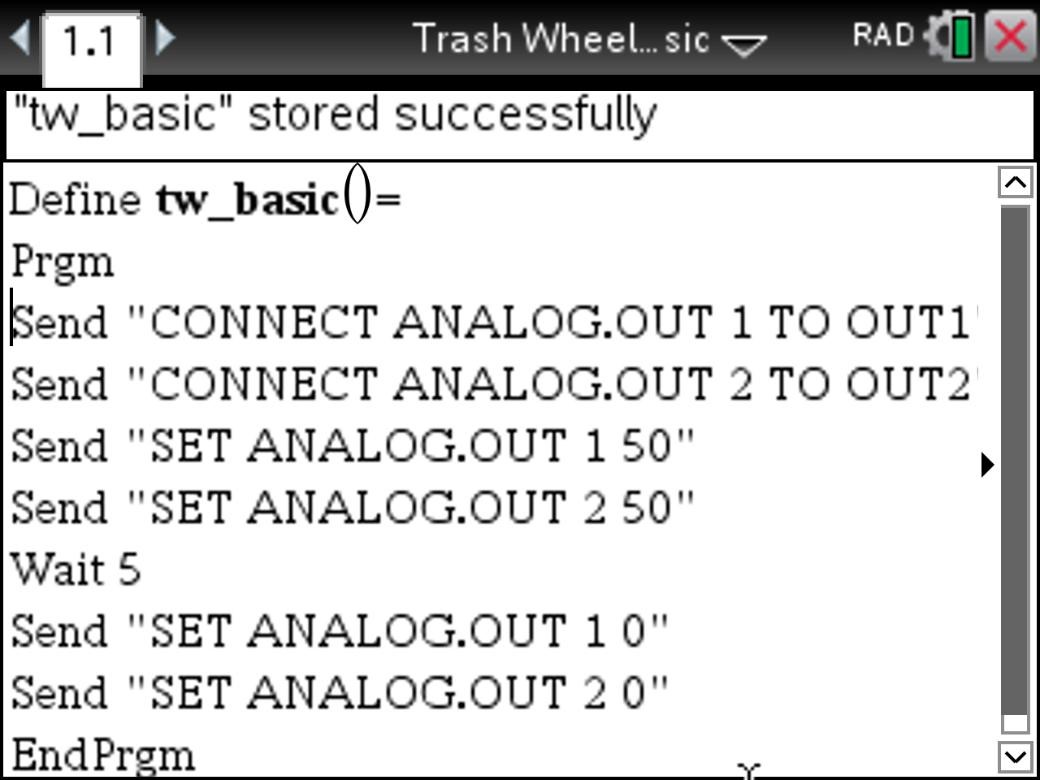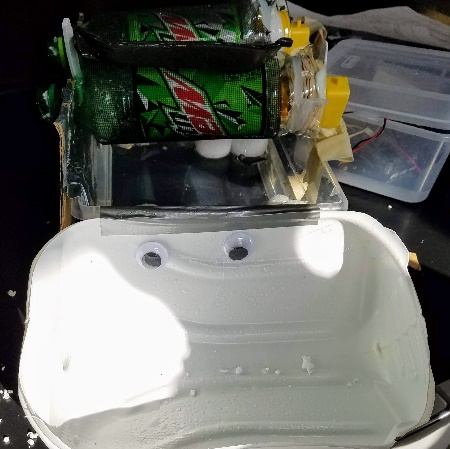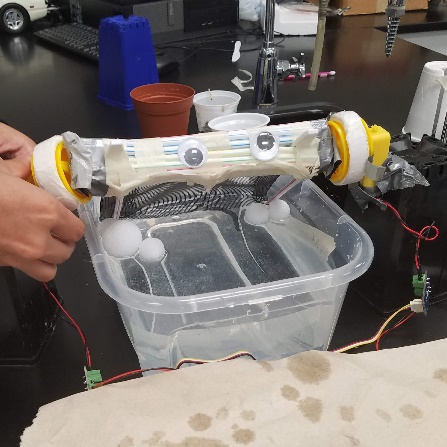Innovation in Biology
When you hear things in your classroom such as, “Well, that didn’t work! Let’s try this …” or “That was so hard! I am so proud of myself,” it is music to an educator’s ears. By incorporating engineering design and coding skills in my biology classroom, I was able to tap into my students’ creativity and push them to excel in areas unfamiliar to them.
The Inspiration
In Baltimore’s Inner Harbor sits an adorable, googly-eyed invention that prevents trash from running off the Jones Falls Watershed and getting in the harbor and, in turn, the Chesapeake Bay. Its name is Mr. Trash Wheel, and it is one of three trash wheels in the area run by the Healthy Harbor initiatives of the Waterfront Partnership of Baltimore.
I knew I could take this charismatic and innovative machine and use it to engage my students in solving a real-world problem of single-use plastics while building skills in engineering design.
The Process
The task was to build a working model of Mr. Trash Wheel while bringing awareness to the effects of single-use plastics on watersheds. To further tie in single-use plastics, the students had to build their model using only single-use plastics that they collected over several weeks. A 60-second public service announcement (PSA) would also be developed during the two-week long project.

Students developed a full understanding of the problem by participating in a campus-wide cleanup and by tracking their own single-use plastic consumption. Armed with their own data and realization of the enormous problem of single-use plastics, we dove into the engineering design process. They started brainstorming ideas individually and then shared them in groups. The students also completed concept sketches of their designs and had discussions about what would and would not work.
Collaboration was crucial in this project. Each team had four members, each with a specific role:
- The Project Manager’s role was to motivate and keep tabs on time management. They had to submit daily reports on their team as well as complete performance evaluations at the end of the project.
- The Mechanical Engineer’s role was to create and modify the design of the trash wheel using the plastics available.
- The Software Engineer’s role was to write and modify the TI-Basic code that would control the DC motors used to move the trash wheel.
- The Marketing/Design role was to help create an attractive aesthetic for the trash wheel and develop the PSA.
We used TI-NspireTM CX graphing calculators, along with TI-Innovator™ Hubs, to control DC motors. Students learned how to use TI-Basic to write simple commands that made the motors move at the speed and duration they needed.

The Results
 |  |  |
The students amazed me with their creativity. Each project had its own personality. They worked effectively in groups and were actively engaged during the entire four days of building, designing and refining their projects. On the last day, a few groups were not quite ready to showcase their project. They had a little more tinkering to do and begged me to shorten their review for their final exam in favor of finishing their trash wheel. When upper-level ninth-grade students ask you to do something like this, you know they are engaged in learning.
This project was by far the most rewarding and engaging activity I have ever participated in during my career as a teacher. I was able to see students get excited about the engineering design process and realize that coding is not so intimidating. Engineering is pretty cool when you have a problem in which students can see themselves authentically as part of the solution.
Tagcloud
Archive
- 2025
- 2024
- 2023
- 2022
-
2021
- January (2)
- February (3)
- March (5)
-
April (7)
- Top Tips for Tackling the SAT® with the TI-84 Plus CE
- Monday Night Calculus With Steve Kokoska and Tom Dick
- Which TI Calculator for the SAT® and Why?
- Top Tips From a Math Teacher for Taking the Online AP® Exam
- Celebrate National Robotics Week With Supervised Teardowns
- How To Use the TI-84 Plus Family of Graphing Calculators To Succeed on the ACT®
- AP® Statistics: 6 Math Functions You Must Know for the TI-84 Plus
- May (1)
- June (3)
- July (2)
- August (5)
- September (2)
-
October (4)
- Transformation Graphing — the Families of Functions Modular Video Series to the Rescue!
- Top 3 Halloween-Themed Classroom Activities
- In Honor of National Chemistry Week, 5 “Organic” Ways to Incorporate TI Technology Into Chemistry Class
- 5 Spook-tacular Ways to Bring the Halloween “Spirits” Into Your Classroom
- November (4)
- December (1)
-
2020
- January (2)
- February (1)
- March (3)
- April (1)
- May (2)
- July (1)
- August (2)
- September (3)
-
October (7)
- Tips for Teachers in the time of COVID-19
- Top 10 Features of TI-84 Plus for Taking the ACT®
- TI Codes Contest Winners Revealed
- Best of Chemistry Activities for the Fall Semester
- Best of Biology Activities for the Fall Semester
- Best of Physics Activities for the Fall Semester
- Best of Middle Grades Science Activities
- November (1)
- December (2)
- 2019
-
2018
- January (1)
- February (5)
- March (4)
- April (5)
- May (4)
- June (4)
- July (4)
- August (4)
- September (5)
-
October (9)
- Art in Chemistry
- Which Texas Instruments (TI) Calculator for the ACT® and Why?
- Meet TI Teacher of the Month: Jessica Kohout
- Innovation in Biology
- Learning With Your Students
- A first-of-its-kind STEM strategy charts path to help educators
- #NCTMregionals Hartford 2018 Recap
- The Math Behind “Going Viral”
- Real-World Applications of Chemistry
-
November (8)
- Testing Tips: Using Calculators on Class Assessments
- Girls in STEM: A Personal Perspective
- 5 Teachers You Should Be Following on Instagram Right Now
- Meet TI Teacher of the Month: Katie England
- End-of-Marking Period Feedback Is a Two-Way Street
- #NCTMregionals Kansas City 2018 Recap
- Slope: It Shouldn’t Just Be a Formula
- Hit a high note exploring the math behind music
- December (5)
- 2017
- 2016
- 2015
